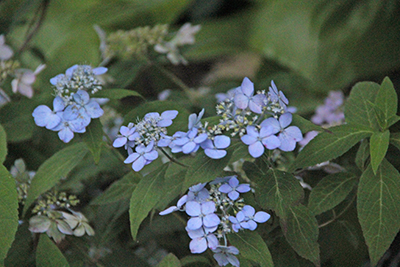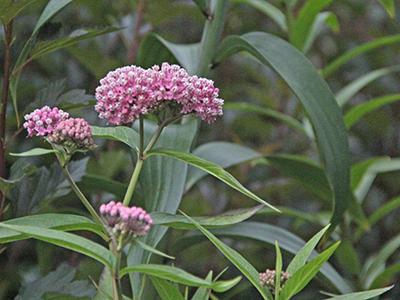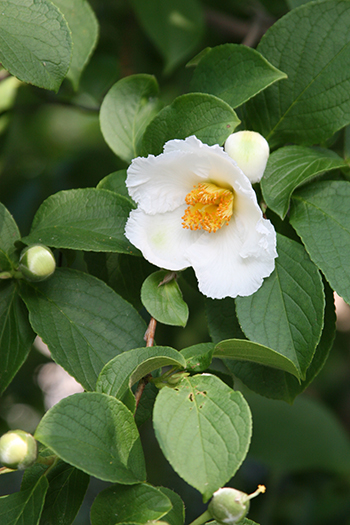
Plants for the Week: July 9

Hydrangea serrata ‘Diadem’
As temperatures begin to creep up, a true staple of summer starts to emerge. Hydrangea serrata ‘Diadem’, mountain hydrangea, is one of many well-loved hydrangea species, and an excellent addition to any garden. The cultivar ‘Diadem’ belongs to the lacecap group of hydrangeas, and like most, does well in full to partial shade.
Those who are familiar with hydrangeas will also know that pH manipulation can be done to alter the color of the blooms. If you have a low pH soil, the acidity will result in blue flowers, and a high pH soil will result in pink flowers. Keep in mind, however, that many cultivars of hydrangeas vary in their sensitivity to soil pH. Regardless of the flower color, Hydrangea serrata ‘Diadem’ is perfect for home landscapes and makes a lovely dried cut flower. Photo credit: R. Martin

Asclepias incarnata
If you are looking for a plant to brighten up your landscape and help pollinators, look no further than Asclepias incarnata. As the common name “swamp milkweed” would suggest, this normally grows in moist lowland areas in its native range and in moist soil in the garden. Apart from its moisture requirements, Asclepias incarnata thrives in full sun and produces striking pink flowers that fade into attractive seedheads. As with common butterfly weed (Asclepias tuberosa), Asclepias incarnata serves as a nectar source for butterflies and a nesting plant for Monarch butterfly larvae. Photo credit: R. Martin

Stewartia pseudocamellia
The Arboretum’s many specimens of Stewartia pseudocamellia, Japanese stewartia, are on full display, with white blooms dotting the landscape and gracefully covering sidewalks on the Swarthmore College campus. A small deciduous tree, Stewartia pseudocamellia can grow in partial shade and even full sun as long as there is adequate moisture. The botanical genus Stewartia is in reference to the Scottish botanist, John Stuart. The Royal Collections Trust contains John’s most notable work “Botanical Tables,” a study of the families of British plants. It’s no wonder that a tree like Stewartia pseudocamellia was named after such a notable botanist. Photo credit: D. Mattis





John Schucker
Posted at 18:29h, 15 JulyAlthough Stewartia pseudocamellia does indeed have smallish white flowers of a similar size, the blossom in your photo seems to be of a Magnolia virginiana or sweetbay magnolia.
Wendy C
Posted at 15:09h, 16 JulyWell chosen, they are all great plants. They all do well here in our coastal area of Nova Scotia
Marcia martin
Posted at 00:28h, 18 JulyI love the way the blossoms fall to the ground …faces up! Marcia m.
Marcia martin
Posted at 00:29h, 18 JulyI love the way the blossoms fall to the ground, faces up!